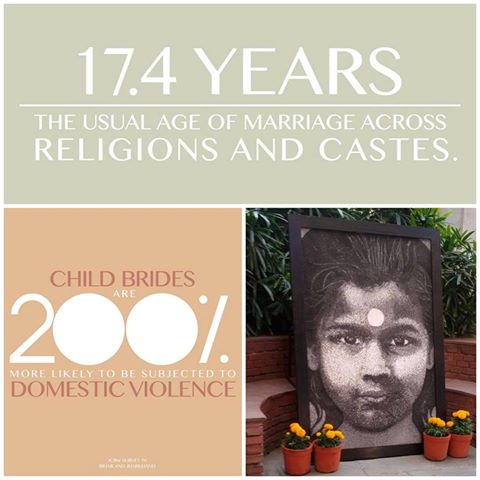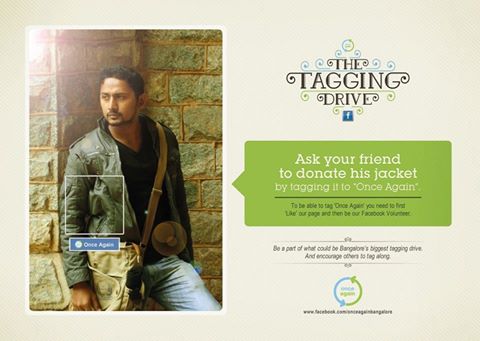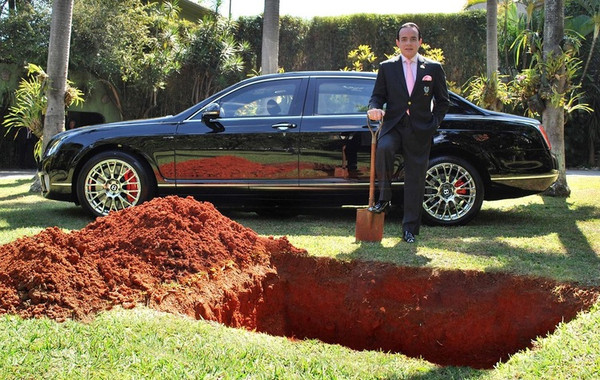In our small – but growing (join us!) – private Facebook group for socially-good marketers, we often discuss successful nonprofit marketing campaigns.
Particularly, those with a little-to-no budget.
Seeing how others drive massive impact with minimal resources is something we can all learn from, and take back to our own organizations and marketing campaigns.
We’ve had a few pretty incredible examples referenced recently, worth highlighting outside of our private group. Laid out below are three wildly successful nonprofit marketing campaigns that drove massive impact with no (media or advertising) budget – and what we can learn from them.
1. Child Survival India: Received 22 million media impressions, spent $93

What was it?
India is home to 40% of the world’s child brides, with 47% of girls married by the time they are 18. Child Survival India, along with Havas Worldwide, wanted to do something about this.
They launched a campaign to raise awareness of child brides through the use of white bindis. While red bindis are worn by married women, the white bindi looks striking and makes people ask questions.
The team traveled the country to sell the white bindis. Every time one was bought, a bindi was added to a 6ft x 4ft art installation portraying a young girl, emblematic of the millions who are forced into child marriages. Check out the campaign video here.
What were the results?
In just 45 days, the campaign garnered 22 million media impressions and achieved a click to conversion ratio of 61.5%.
They managed to sell 60,000+ white bindis, initiate 1.5 million college volunteers, and generate awareness among policy makers.
Most importantly, all the money raised helped Child Survival India conduct awareness workshops for adolescent girls in 160 villages across India.
All of this was generated without any media spend. In fact, the only money spent was on buying 100,000 white bindis, which was just $93 dollars!
Why was their marketing so successful?
They leveraged existing cultural awareness. By building the campaign around something everyone recognized – the red bindi (a popular cultural symbol of marriage) – the general public would immediately relate to the message.
They also used contradiction to great success. Redesigning the red bindi as white was contrary to what people would usually expect when seeing a bindi. The contradiction grabbed attention and made viewers inquisitive.
2. Once Again: Increased revenue by 462%, spent $0

What was it?
Once Again is a Bangalore-based NGO that has a unique model: they accept donations only in the form of old items, not money. They then sell the items at a minimal price to the underprivileged, putting the revenue back into the local community.
With no budget but desperate for awareness, they created The Tagging Drive – an online donation drive on Facebook. Users were asked to tag their friends’ old photos.
The twist: They would tag their clothes, shoes, and accessories rather than faces, and tag the Once Again Facebook page rather than their friends. Check out a case study video here.
What were the results?
Thousands of photos were tagged, resulting in over ten thousand items donated to the organization. The sale of these items increased revenue for Once Again by a massive 462%.
Why was their marketing so successful?
They created curiosity. Tagging old photos created a lot more of a reaction than tagging recent photos. It was unexpected and instantly grabbed attention – as well as likely identifying clothes and items that were no longer being used.
They leveraged existing platforms and reach. By using a feature (tagging) that already existed on a platform that was already wildly popular (Facebook), Once Again were able to drive huge reach for their campaign without having to do any organic community building around the campaign themselves.
3. ABTO (Brazilian Organ Transplantation Association): Earned $22 million worth of media visibility, spent $0

What was it?
To draw attention to the wastefulness of burying people without using their organs to save lives, ABTO enlisted eccentric and well-known Brazilian millionaire Count Chiquinho Scarpa to bury his half-million-dollar Bentley in the yard of his mansion.
Count Chiquinho Scarpa made the announcement on Facebook and built huge media interest with a few follow up posts as the burial date neared.
Once it had garnered enough media attention, and the burial day arrived, he interrupted the funeral and revealed that the stunt was meant to show how absurd it is that people bury their organs.
Watch a fun video about the campaign here.
What were the results?
Despite only having six posts on Facebook, the campaign reached more than 172 million people on social networks. It gained $22 million in earned media on TV, radio, newspapers, magazines and internet portals, and became Brazil’s #1 trending topic and #2 in the world.
Most importantly, organ donations were boosted by 31.5 per cent in one month following the campaign.
Why was their marketing so successful?
They used shock value. The ridiculousness of a car funeral shocked people. Combined with the anger they feel toward rich people who take their wealth for granted, it made for the perfect set-up for a bait and switch. (Caution: Use shock value wisely, it’s a risky tactic!)
They tapped into negative emotions. A study performed by Zendesk showed that people who suffered a bad or negative interaction with a brand were 50% more likely to share it on social media than those who had good experiences. Simply, people are more likely to share things they don’t like than things they like, and ABTO exploited this.
They told a story. It was a Disney-esque plot: a gripping prologue, development of a key character, an unpredictable twist, and a happy ending. All marketing needs to tell a story, and ABTO got it spot on.
What can we learn from these campaigns?
– Create a narrative. Stemming from your brand’s identity (mission, values, personality), all marketing needs to tell a story. Any marketing content (ads, emails etc.) ought to be part of a wider narrative.
– Use negative emotions. As humans, we hate to lose significantly more than we like to win (here’s a great article on this). While you don’t need to go to such lengths as ABTO, consider how you can explore using negativity in your marketing to incite more engagement.
– Leverage existing opportunity. Whether it’s your message, your influencers, or your marketing channels, identify the existing levers you can use to scale your campaigns.
– Keep it simple. The messages in these campaign were crystal clear. Attention spans are short – people must be able to relate and understand right away, otherwise you’ll lose them. (Consider: would a 6th grader “get” your campaign? If not, rework it).
– Be unique. There are an almost infinite amount of charities asking consumers for their hard-earned money these days, often through desperate pleas and guilt tactics. If you want to drive real social change, the onus is on you to be different.
– Exercise ‘no budget’ scenarios. Even if you do have budget, consider what you’d do without it. It’s a great way to tap into creativity! Budget is a “nice to have” not a “must have”.
Join our mailing group to get actionable advice by email, and ensure that you're using marketing more effectively as a tool for growth, revenue, and recognition.
We promise we don't spam, we don't email often, and we'll NEVER share your info with anyone else!



